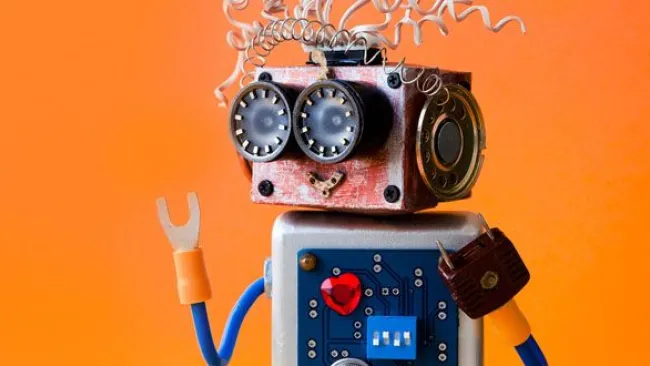AI is a job killer with sights set squarely on the most vulnerable, hourly paid workers.
This myth is hard to debunk. Many believe it with fierce conviction. Use artificial intelligence to search statistics supporting the job-killer myth, and you’ll probably unearth some pretty credible-looking “evidence.”
Fact is, AI will transform how work is performed by hourly paid workers. AI will not eliminate these jobs; it will change the complexion — for the better. This change is already happening.
In the customer service space, AI-enabled associates engage in higher quality, more personalised interactions with improved resolution rates. And yes, more cost-effectively. AI-enabled bots unburden workers from the tedious tasks that bring no personal gratification, like a simple request for a password reset or address change.
When AI is deployed thoughtfully to support humans in customer-facing roles, it makes people more successful and happier in their work. Employee satisfaction surveys prove this out.
Caveat: Some hourly workers will not be receptive to AI at all, unwilling or unable to incorporate the tool into their workday routines.
For those who reject AI when a job requires it, there will be loss of income but these roles will be picked up by more flexible employees eager to learn something new and who may reveal talents that went unnoticed prior to AI. By nurturing these gifts and developing new skills, workers become more versatile and more valuable to employers, which may lead to improved wages.
AI will also create new job positions in training and development that don’t exist today.
Time will tell just how AI plays out for hourly wage earners, but consider this: A new career that’s sprouted from AI called “AI prompt engineer” pays six-figure salaries to creative, puzzle-solvers and doesn’t require any technology or coding experience.
Why the myth persists
Irrational fear stoked by advancements in automation is our time-honored tradition since the Industrial Revolution and even before that. The advent of sewing machines would rob fair maidens of their daily bread. That guy on foot waving a red flag to lead the way for a steam-powered locomotive would lose his job to machine-guided routing technology.
Even though history proves technological progress led to safer, better jobs for humans, the perception of AI as a job killer persists.
Recent research found that 14% of respondents surveyed claim to have lost a job loss due to automation. Interestingly, this group believed a far greater share of workers — 47% — lost jobs to automation. Even among workers who did not lose a job to automation, the perception of AI-inflicted job loss was inflated; that group believed 29% of jobs were lost to automation, double the actual figure.
Acknowledging our natural tendencies to resist and fear change might make it easier to confront it and consider new ways AI can empower hourly workers.
The AI-enabled associate earns an A+
Imagine your dream contact centre superhero: knowledgeable, patient, a creative problem-solver, compassionate, fast with the right answers, almost omniscient. He or she correctly anticipates what a customer needs before the customer knows. Proactive. Here’s how it happens:
- AI-based training: AI bots used for training conduct role-playing exercises with new hires so they can practise customer interactions in a simulated environment before taking live calls. Specialised bots, such as TTEC’s “compassion bots,” are programmed to encourage positive behaviours and language that express empathy and respect. “Objection bots” coach new hires how best to handle more challenging interactions, such as when a customer calls in an agitated state or one who rejects all help an associate offers.
This is not an AI-driven script but rather a means to train the humanity muscle, so associates adopt a compassionate style of handling calls, one that becomes second nature. When associates see this approach is working for them and calls go more smoothly, it reinforces the behaviour and the humanity muscle gets stronger.
- AI-powered assist: Even the most compassionate associate can’t always retrieve information quickly to resolve an issue. AI can do this in a supporting role TTEC calls “associate assist.” AI can collect essential customer information before a call reaches an associate. Now the associate can address the caller (or texter) by name with no need to gather other identifying information because AI already verified identity.
This is not automation to replace an associate; it’s AI as a wingman in the background. As a customer interaction plays out, AI proactively serves up relevant information from a knowledgebase and displays that to the associate, who now has answers in real time instead of “let me look that up for you…”
- AI-driven stenographer: An important task of contact centre associates is summarising details of what transpired on a call, so the record is available for the next associate if resolution doesn’t occur on the first call. Too often, case notes hastily written by one associate are hard for others to decipher, dragging out handle times and dragging down CSAT.
This one does rely on automation and relieves associates of a tedious task they will gleefully delegate to technology. AI can capture and summarise salient details from a call, organise the information in simple, standard, and searchable format far better than most humans. And faster.
- AI-fuelled QA: If a contact centre manager listens to just three out of 100 calls to monitor quality, that’s very little intelligence gathered. AI can listen to 100 out of 100 calls (or 1 million out of 1 million calls) and score each to determine whether the associate said “thank you” and complied with all steps in the workflow process. Such a large data set will reveal bigger trends and opportunities for improvement more accurately.
The contact centre of the future will remain a human-driven hub of customer support. It has to. There are times when only a reassuring human voice will appease a stressed customer and resolve an issue.
And, for the times when customers have routine, straight-forward requests and prefer to bypass a live person altogether, AI will be there, too.

















